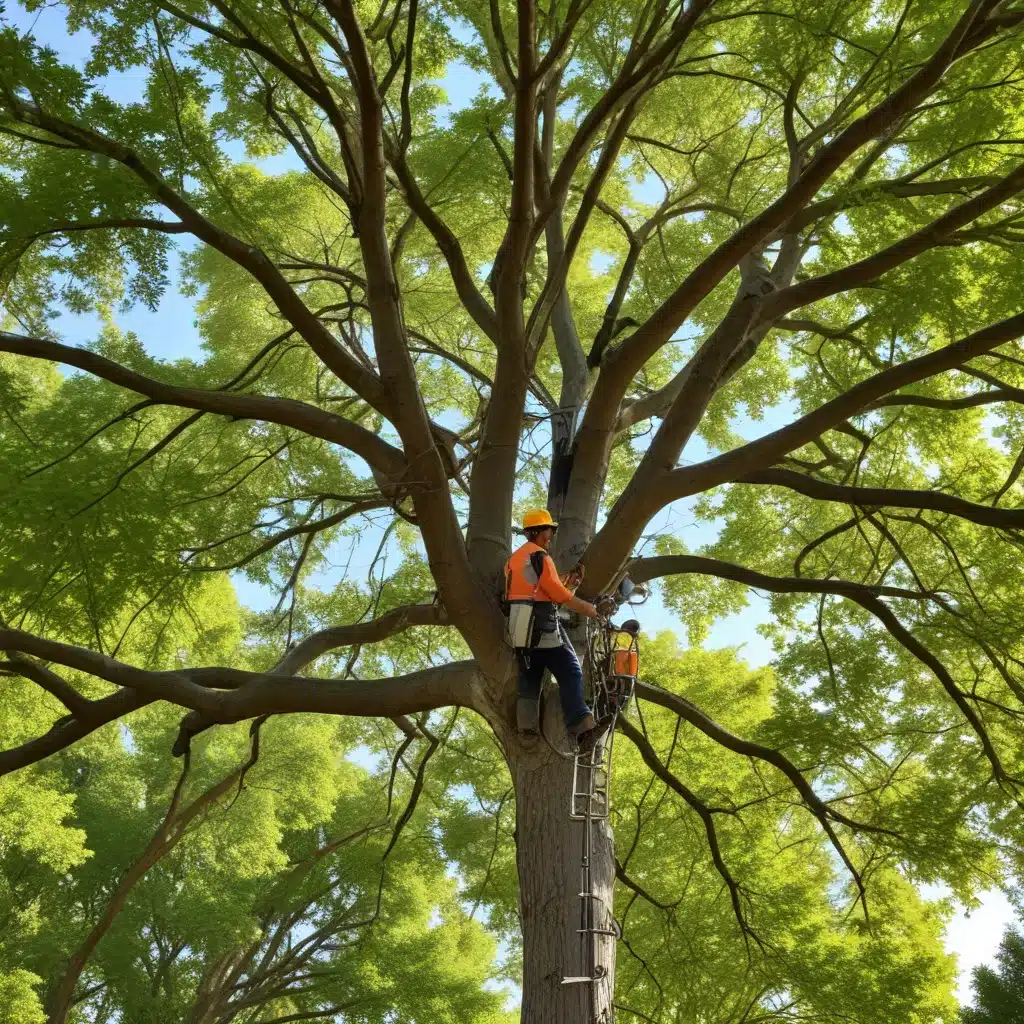
As dedicated tree care specialists at TriCounty Tree Care, we understand the profound impact that thoughtful, seasonally-aligned maintenance can have on the health and longevity of trees within our communities. From the selection of resilient species to the implementation of tailored pruning regimens, each facet of tree care plays a vital role in fostering vibrant, ecologically-beneficial urban and suburban landscapes.
Tree Health and Resilience
Factors Affecting Tree Health
The vitality of a tree is influenced by a complex interplay of environmental conditions, pests, and diseases. Soil composition, access to water and nutrients, and exposure to sunlight and wind all contribute to a tree’s overall vigor. Similarly, pathogens, insects, and mechanical damage can pose significant threats, compromising a tree’s ability to thrive.
Strategies for Building Resilience
Cultivating resilient trees begins with proactive measures to address these potential stressors. Amending soil with organic matter and ensuring adequate drainage can optimize nutrient availability and root health. Strategically selecting tree species adapted to local climatic conditions enhances a tree’s innate ability to withstand environmental challenges. Implementing integrated pest management (IPM) practices, which combine cultural, biological, and selective chemical controls, can effectively manage pest and disease pressures.
Seasonal Maintenance Practices
Seasonal tree maintenance plays a vital role in maintaining resilience. Pruning during the dormant season promotes structural integrity and removes any dead or damaged wood, reducing the risk of disease and pest infestations. Mulching around the root zone during the fall helps insulate the roots, conserve soil moisture, and suppress weed growth. Vigilant monitoring throughout the year allows for the early detection and treatment of emerging issues, maximizing the long-term health and vigor of the tree.
Tree Cultivation Techniques
Soil and Nutrient Management
Healthy soil is the foundation for thriving trees. Conducting soil tests to determine nutrient levels and pH can inform the appropriate application of organic amendments, such as compost or aged manure, to enrich the soil and optimize nutrient availability. Maintaining a layer of mulch around the root zone, while taking care to avoid direct contact with the trunk, helps retain soil moisture and suppress weed growth.
Pruning and Shaping
Proper pruning techniques are essential for promoting the structural integrity and aesthetic appeal of trees. Dormant-season pruning focuses on removing dead, damaged, or crossing branches, as well as thinning the canopy to improve air circulation and light penetration. Summer pruning, on the other hand, is often employed to shape the tree, redirect growth, and maintain its desired form.
Transplanting and Relocation
Transplanting or relocating established trees requires careful planning and execution to ensure their successful transition. Selecting the optimal planting season, preparing the new site with well-draining soil, and properly balling and burlapping the root system can all contribute to the long-term survival and thriving of the transplanted tree.
Landscape Design Considerations
Integrating Trees into the Landscape
The thoughtful integration of trees into a landscape design can have a profound impact on the overall aesthetic, function, and environmental benefits of a property. Strategically placing trees to provide shade, wind protection, and visual interest enhances the comfort and livability of outdoor spaces. Considering the mature size and growth habits of different tree species ensures they complement, rather than overwhelm, the surrounding landscape.
Selecting Appropriate Tree Species
The selection of tree species is a critical decision that should take into account a variety of factors, including climate suitability, soil preferences, maintenance requirements, and desired aesthetic qualities. Prioritizing the use of native or well-adapted tree species can foster biodiversity and ecological resilience within the landscape. Consulting with local arborists or nursery professionals can help guide the selection of the most appropriate trees for a given site.
Maintenance Planning
Developing a comprehensive maintenance plan is essential for ensuring the long-term health and vibrancy of a landscape. This plan should outline seasonal pruning schedules, pest and disease monitoring protocols, watering regimens, and mulching practices, tailored to the specific needs of the trees within the landscape. Proactive maintenance not only enhances the aesthetic appeal of the landscape but also contributes to the longevity and ecological benefits provided by the trees.
Environmental Benefits of Healthy Trees
Ecosystem Services
Thriving trees play a vital role in supporting the overall health and resilience of local ecosystems. They provide shade, regulate temperatures, filter air pollutants, and sequester carbon, all of which contribute to the mitigation of urban heat island effects and climate change impacts. Additionally, trees offer wildlife habitat, support biodiversity, and improve water quality through the reduction of stormwater runoff and soil erosion.
Urban Forestry
The management and preservation of urban forests is a critical component of sustainable landscape design. Municipal urban forestry programs, such as the one recently highlighted by the City of Madison, prioritize the strategic planting, care, and replacement of street trees to maintain a diverse, resilient, and aesthetically-pleasing urban canopy. Homeowners and community members play a vital role in supporting these initiatives through responsible tree care practices and participation in local tree-planting efforts.
Sustainable Landscaping
The cultivation of healthy, thriving trees is a cornerstone of sustainable landscaping practices. By selecting appropriate species, implementing thoughtful maintenance regimens, and integrating trees seamlessly into the overall landscape design, we can create outdoor spaces that not only enhance the visual appeal of our communities but also contribute to the long-term environmental health and ecological balance of our local ecosystems. As stewards of the land, it is our responsibility to cultivate landscapes that are both aesthetically pleasing and environmentally resilient.


